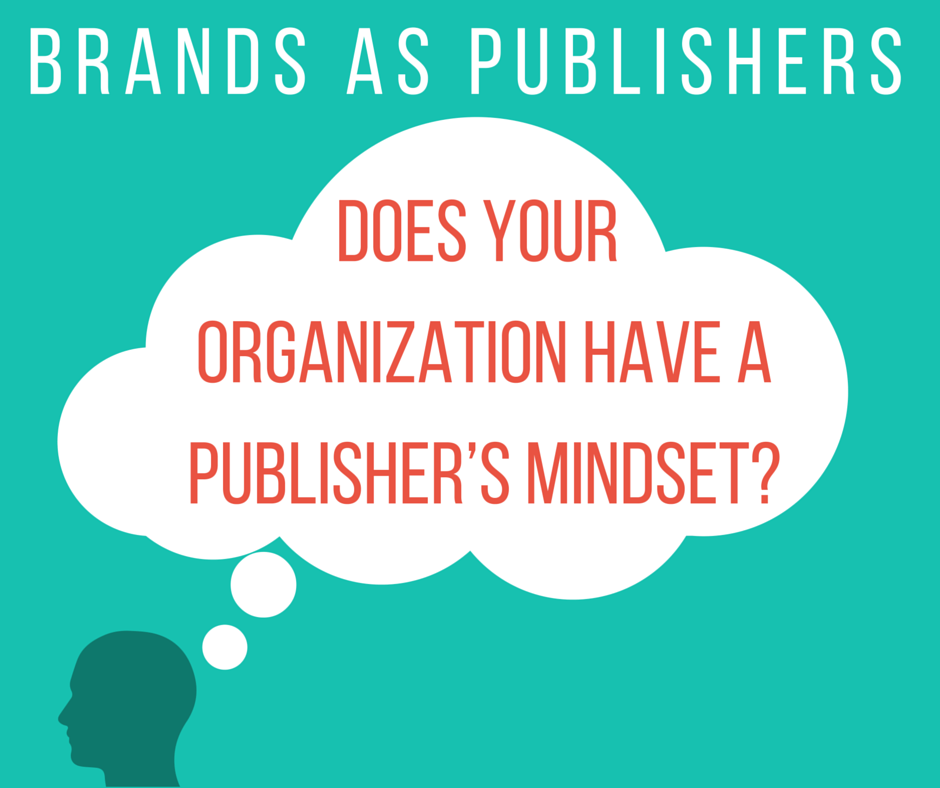Brands as Publishers: Does Your Organization Have a Publisher’s Mindset?

Posted By Marian Hughes on May 06, 2016
Since the emergence of Content Marketing, brands have been thinking and acting more like publishers to create engaging original content that will build trust and credibility with their buyers. It’s common-place now to find former journalists of well-known news outlets working for brands to help keep their content engines roaring with interesting and useful pieces of owned media.
Tier One’s content team also includes former journalists who bring a unique perspective to our owned media programming for clients. We sat down with Ashley Tate, a former money editor of Real Simple and a valued contributor to our content marketing team to gain insights on developing pieces with a publisher’s mindset.
Q: Tell us about your background. How long were you in publishing?
I worked at Real Simple magazine for just about 10 years. While there, my positions ran the gamut from fashion assistant to money editor. But writing has always been in my blood — I recently found a letter sent to me from my grandmother when I was just 6 years old. In it, she asks me how my writing is going and if I’d had time to write anything new, so I guess I can document that my interest in writing began at a young age!
Q: How does your experience as an editor influence the way you develop content pieces?
I read everything through the lens of knowing very little about the topic. Unless you're writing for an academic journal, it's possible that a fair number of readers are coming to your content knowing nothing or just a small amount about the topic at hand. That's why they've come to your article — to learn more! So I always make sure my content is jargon-free and provides explainers for any terms, organizations, businesses, etc. that could be unknown by the reader.
I also always think about how to package the content and how to break it up into smaller pieces for the reader. They might not make it through your entire article, so you've got to give them some takeaways throughout.
Q: Do you have any processes from your publishing days that you still use now for content development?
I still work in a very similar manner actually. One thing that sticks out particularly is that I never write something in order. Normally I write the middle first, followed by the end and conclude with the beginning. I do this because I find that introductions the hardest to write. If I made myself write something from beginning to end, I would either A) write a poor intro or B) never complete the assignment because I’d be stuck at the beginning. I find it best to get the words that come to you the easiest down on the page and then go from there. It gives you a sense of accomplishment and the confidence to get through the tougher sections.
Also, I like doing things well in advance. I’d rather work on numerous pieces of content at the same time in order to spread the work out over days/weeks.
Q: What do you believe are the elements of a great story?
You’ve got to have a great first couple of paragraphs. These days, there’s so much content out there and not enough time to consume it. (Ask me how many stacks of unread magazines I have in my house!) If you don’t nab me in the first 10 sentences or so, I’m going to move on to something else.
A great story also has the perfect balance of giving you new information without giving you every single piece of information on the topic. I’d rather read a well-edited story that leaves me wanting more than a story that goes on and on seemingly endlessly. If you leave me wanting more, I’ll definitely come back to your website/publication with the hopes of getting that additional information. But if you provide too many details, I’ll probably stop reading before reaching the end of the article.
Interesting photos or graphics are also a must. I think it’s better to go without a piece of art than include a poor piece of clipart.
Q: Do you have any tips or tricks for identifying a gem of a story idea in a company?
Ask a lot of questions! Usually, one can’t recognize when something is unique or interesting about oneself. Someone else needs to ID that. So if you’re the content producer, the story subject isn’t going to reveal that juicy nugget of information. It’s up to you to uncover it.
Q: As a publisher, you were always writing for the same audience and had a defined voice? How do you learn the changing voices and audiences of multiple clients?
The best advice I have about developing a voice is to read a lot. And when I say a lot, I don’t just mean a lot from the same source. Read everything — newspapers, magazines, websites, blogs, Twitter feeds, etc. The more you read, the more apparent “voice” should become. You’ll start understanding that one publication is speaking in a 20-something female voice whereas another might be focused on attracting 40-something men working in the tech sector.
Q: What do you believe are the best practices to turn an ordinary piece of content into an extraordinary piece of content?
It’s going to sound very magazine-y, but I firmly believe in the concept of packaging. Any topic can be interesting or boring. It’s all about how you present it to the reader. It’s fine to have running text for some things, but if you constantly do that, the reader is going to get bored. Instead, try various formats — for example, create a numbered list, write an A-Z list, put the information into a calendar format, have an expert provide information and deliver it in an “as told to” format, do a Q&A. Once you do the reporting, always brainstorm the best way to present the content before you actually start writing. It’s important to switch things up on occasion and sometimes wrap the article up in shiny wrapping paper and put a bow on top.
Q: How important do you feel the headline is to your story?
I think it’s a lot more important in print than in digital. In print, you need to be clever or pun-y. But online, straightforward is better. Readers will gloss over anything that’s too complicated, but give them “22 Killer Things to Do This Summer” and you’ve got a winner.
Q: How often do you think about social media when developing your content pieces? Are you thinking about how your stories can be extended by social frequently?
I think about social media with every piece of content I write. It’s the world we live in, so if you’re going to be a content creator, you have to have it on your mind. I’m not a fan of creating things solely to get hits on social, but I always think about how the work I’m creating can be successfully packaged for social.
Q: What turns you off as a writer? What are your greatest writing pet peeves?
One negative about being a writer/editor is that it’s difficult to read something for sheer pleasure. You’re always critiquing it in your head. I have so many pet peeves: not using the Oxford comma; and using the same word repeatedly in a paragraph. Oh, and anything that can be viewed as jargon drives me crazy.
Q: How do you combat writer’s block?
By closing my laptop. When I’m stuck, I literally leave the work and go do something mundane, like folding laundry or walking my dogs. Letting my brain rest works every single time. Taking a shower is also great!
Q: What companies do you feel are doing a great job at developing content?
Right now, I’m loving what Ozy is doing. And the New York Times, the Atlantic, and Entertainment Weekly are must reads as well.
About Ashley Tate:
Ashley Tate is a contributor to Tier One's content marketing team. Her work has appeared in Ozy, Country Living, Good Housekeeping, Money, O: The Oprah Magazine, Real Simple, Women's Health, Credit Sesame, PureWow, Woman's Day, Daily Glow, and more.


Marian Hughes
Marian Hughes is a Co-founder and Managing Partner at Tier One, where she leads the agency's Chicago office. With more than 30 years of agency experience, Marian has helped shape communications programs for innovative technology brands since the 1990s dot-com boom. Her greatest love is building and leading agile teams that delight clients with creative programming and breakthrough results. When she is not working, Marian enjoys nature and the outdoors — whether through hiking, gardening, or on the pickleball court.


